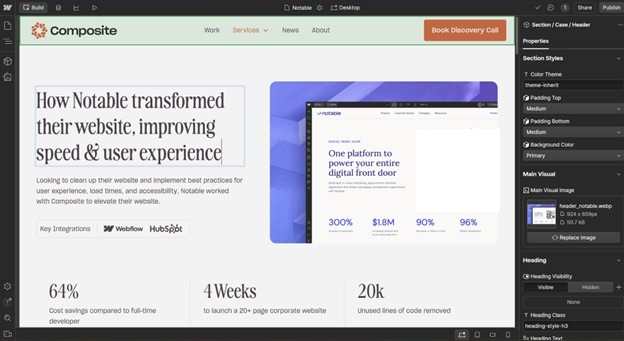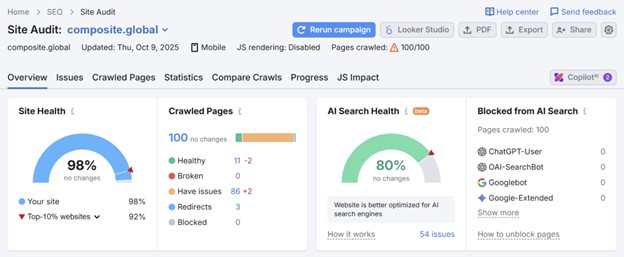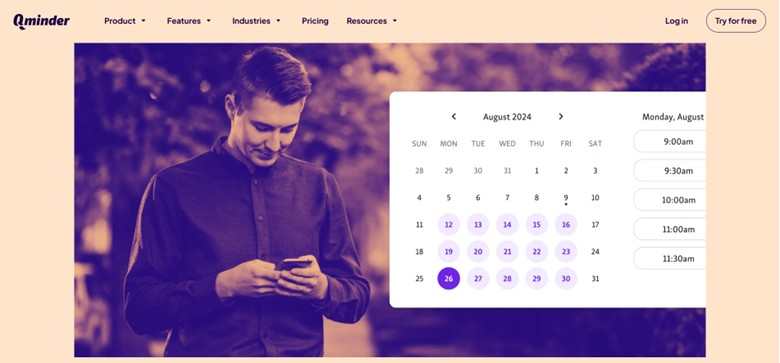Introduction
In today’s digital economy, navigating the diverse universe of B2B tech solutions can be challenging. Businesses need a strong foundation of research to make informed decisions, ensuring they choose solutions that align with their goals. The process begins with understanding the B2B tech landscape, crafting a targeted research strategy, and effectively executing it to gather actionable insights.

Navigating the B2B Tech Landscape
Understanding B2B Technology
B2B technology refers to software and IT solutions designed to improve interactions between businesses, optimizing operations and enhancing customer relationships. Solutions range from cloud computing and CRM platforms to AI-driven analytics tools. Understanding the full scope of what these technologies can offer you involves exploring how they integrate into existing systems and streamline processes, saving time and resources.
Spotting Emerging Trends
Emerging trends in B2B technology, such as AI advancements, automation, and the Internet of Things (IoT), are reshaping how businesses operate. Staying ahead means noticing shifts like increased adoption of cloud-based solutions and the rise of cybersecurity as a top priority. Monitoring these trends helps you anticipate changes, adapt strategies, and stay competitive.
When you begin researching B2B Tech Solutions, the most critical first step is to look past marketing claims and analyze real-world performance and customer support. Since cloud infrastructure is essential for organizations of all sizes, from high-growth startups to web developers, prioritizing providers that offer affordable, enterprise-grade cloud infrastructure products is key. To get an honest assessment of a provider’s service quality and reliability, you should always consult verified reviews by Kamatera customers and tech experts, which often highlight crucial aspects like responsive customer care and ease of use.
Crafting Your B2B Market Research Strategy
Identifying Research Objectives
Identifying clear research objectives is the cornerstone of any successful B2B tech solution exploration. It begins with defining your business goals—whether that’s improving operational efficiency, expanding market reach, or enhancing customer satisfaction. Clarifying these objectives ensures your research efforts are focused and relevant. Prioritize objectives to manage resources effectively and guide your decision-making process.
Selecting Appropriate Research Methods
Choosing the right research methods is essential to gather meaningful data. Start by considering both qualitative and quantitative approaches. Surveys and questionnaires can offer quantifiable insights, while interviews and focus groups provide depth and context. A mixed-method approach often yields the most comprehensive results, enabling you to address various aspects of your research objectives.
Leveraging Qualitative and Quantitative Approaches
Integrating both qualitative and quantitative approaches gives a well-rounded perspective on B2B tech solutions. Quantitative data, such as survey results and statistical analyses, provide measurable evidence of trends and patterns. Qualitative data, gleaned from interviews and focus groups, offer deeper insights into user experiences and preferences. Together, these methods create a robust framework for understanding complex market dynamics and crafting strategic solutions.
Conducting Effective Market Research
Exploring Primary Research Techniques
Primary research techniques involve direct collection of data tailored to your specific needs. Surveys are widely utilized for obtaining quantitative data from a large group, offering insights into current trends and customer preferences. Interviews and focus groups provide qualitative depth, revealing motivations and attitudes that drive business decisions. Observational methods, such as user testing, allow you to see firsthand how solutions are implemented. AI has officially taken the wheel in market research. You can use AI tools for speeding up data collection and analysis to offering razor-sharp insights and real-time recommendations.
Utilizing Secondary Data Sources
Secondary data sources provide invaluable insights without the need to collect fresh data, saving time and resources. These sources include industry reports, company profiles, competitor analyses, and academic publications. Leveraging such resources helps in identifying existing market trends and benchmarks. Secondary data can also supplement primary research by providing broader context and validating findings.
Best Practices for Data Collection and Analysis
Effective data collection and analysis are crucial for extracting actionable insights. Start by ensuring data accuracy through reliable sources and verified methods. Consistently document processes to maintain transparency and reproducibility. Use diverse tools and software for data management, enabling comprehensive analysis of both qualitative and quantitative data. Data visualization, such as charts and graphs, transforms complex information into understandable formats, enhancing decision-making.
Gleaning Competitive Intelligence
Monitoring Competitor Activities
Keeping a close eye on competitor activities is vital for maintaining your market edge. Regularly analyze competitors’ product launches, marketing strategies, and customer feedback to understand their strengths and weaknesses. Tools like social media monitoring and SWOT analysis can uncover trends and opportunities. Such insights help in refining your strategies, ensuring they remain competitive and innovative.
Gathering Insights on Consumer Mindsets
Understanding consumer mindsets requires delving into their needs, preferences, and decision-making processes. Techniques such as customer surveys, feedback forms, and social media listening can reveal valuable insights into customer expectations and pain points. Analyzing this data helps you tailor products and marketing strategies to better meet consumer demands, ultimately increasing customer satisfaction and loyalty.
Implementing Actionable Insights
Translating Research Into Sales Strategies
The insights gained from research can significantly enhance sales strategies by aligning them with customer needs and market demands. Use data to identify high-potential leads, craft personalized messaging, and optimize sales funnels. By understanding customer pain points and preferences, you can tailor your approach to address specific issues, boosting conversion rates. Continuous feedback loops between research and sales refine strategies over time, ensuring responsiveness to market changes.
Influencing Product Development and Pricing
Research insights play a crucial role in shaping product development and pricing strategies. By understanding market demands and competitor offerings, you can guide feature development and prioritize enhancements that resonate with target audiences. Pricing strategies, informed by market analysis, can be tailored to balance competitiveness with value perception. Regular feedback integration ensures that product offerings remain aligned with evolving customer expectations and trends.













